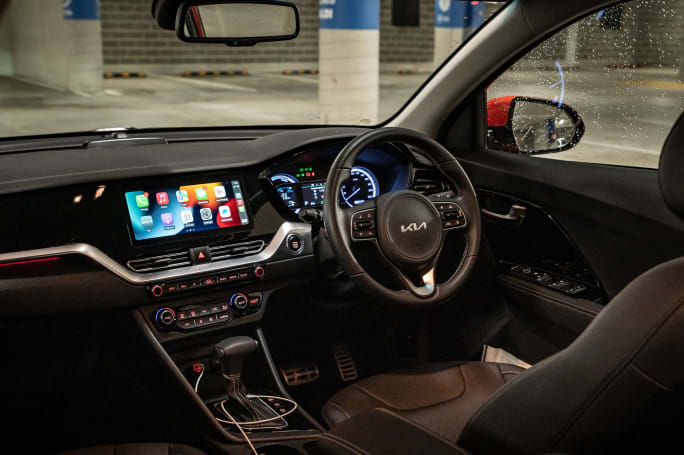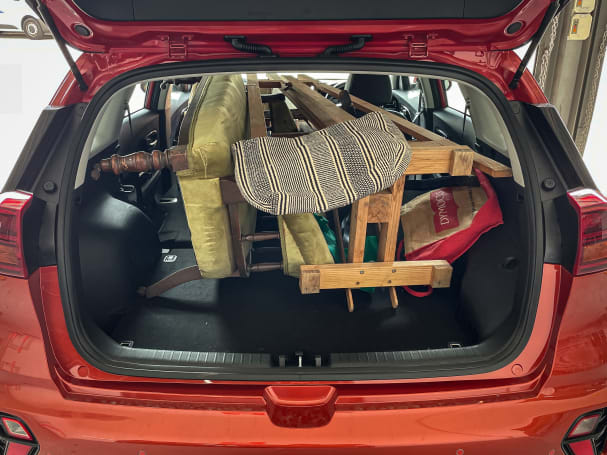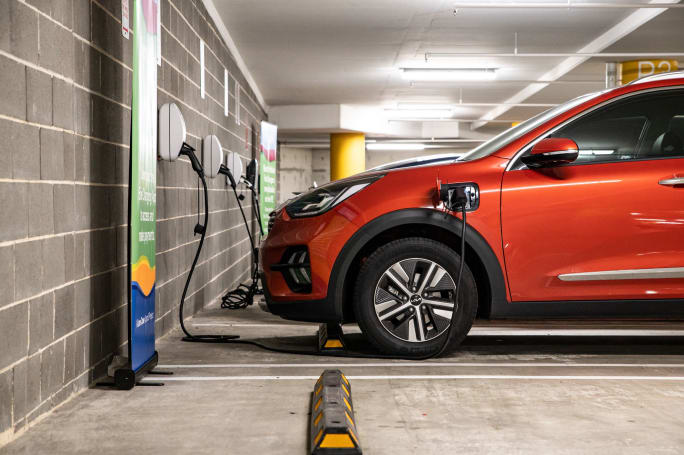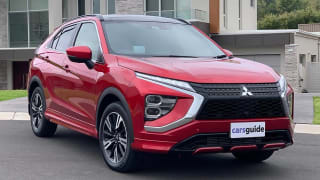Let’s set the scene and understand where the Niro sits in the market. The car I picked up is the higher of two Niro PHEV trim levels, wearing a before-on-roads price-tag of $50,490. Size-wise, it sits in Kia’s busy SUV line-up between the slightly smaller Seltos and larger Sportage.
Its closest competitors include the similarly sized Mitsubishi Eclipse Cross ES PHEV ($46,490), the smaller Hyundai Ioniq Premium PHEV ($47,950), and the larger MG HS Plus EV ($46,990).
MG is a particular threat here, as it is the only competitor (for now) which offers a fully electric option at this price, with the ZS EV costing from $44,990.
The Niro PHEV will travel a fair bit further than the ZS EV’s 263km range thanks to its combustion components, though, and its features impress with highlights including a full gamut of active safety tech, a 10.25-inch multimedia touchscreen, interior mood lighting, hard-wearing synthetic leather seat trim, and LED headlights.
It has a claimed electric-only range of 58km or so (on the more lenient NEDC cycle) before needing to use the petrol engine. Exactly how much range this works out as in the real-world (and whether it’s enough) will be a focus for later instalments of this review as I settle into more of a pattern of use.
My first week with the car put it through a fairly thorough initial round of testing, driving around town, followed by a freeway stint on the weekend, the latter loaded to the brim with furniture.

This is one of the key selling points of the Niro over its Hyundai Kona or Ioniq relations, it has an enormous cabin with a high roof.
On the numbers this means 1322L of space with the rear seats down, or 324L with the seats up, which sounds middling, but in reality turns out to be a useful space.
Interestingly, the PHEV version of the Niro has the smallest boot measurements in the range, perhaps courtesy of its larger rear-mounted battery components, leading to a higher boot floor.

While I already love the practicality of the Niro compared to the Mazda MX-30, some issues have presented themselves. Chief among them is the slow AC charger.
Although it's still early days I've driven this car a lot (894km behind the wheel in a month), and I'm already annoyed by how often I need to charge it up, and how long that process takes.
The Niro’s on-board AC inverter, the thing which dictates the amount of range you can charge per hour, regardless of how fast the station you plug into is, means you can only gain some 20 or so kilometres of range per hour.

At 3.3kW it is about half as fast as I believe is ideal, and only a little faster than plugging it in to a standard wall socket. Kia claims it will charge from 15 – 95 per cent in two hours and 15 minutes, but I see 2.5 – 3.0 hours on my charging sessions at an 11kW charger with a cable capable of 22kW.
As I can’t charge up at home, this means even on longer trips to the shops it’s tough to pad it out to the 2.5 hours needed to get the Niro to a full charge, often leaving me with a half charge or around 30km of dash-reported driving range per session.
Frustratingly, I also tested the Lexus NX PHEV during this time, and was astounded to find its 6.6kW charger was much faster and therefore more convenient to use, despite that vehicle having more than twice the battery size.
Electric use in the Niro can be prolonged by smart use of the hybrid modes available, but it’s not as versatile as some, offering only ‘Automatic’, ‘EV’, and ‘hybrid’ modes.
See more reviews on the Kia Niro
There’s no ‘charge’ mode, although there is a ‘sport’ mode activated via the shifter which relies more on the engine than the electric features.
On my trip up the mountains (and any time I stray onto the freeway), I relied more heavily on the hybrid mode, as it is the most efficient time to have the combustion engine on, while around town I try to keep the Niro in EV mode as much as possible.
I was impressed to find that even with several days with the battery drained, our car was returning a fuel consumption figure of 1.9L/100km for the first month, just off the 1.3L/100km claim.
More impressive still was the fact that after so many kilometres travelled, I had only used half a tank of fuel.
There is much more to discuss on the Niro’s driving characteristics, what my partner thinks of it, as well as how our charging habits with the car develop, so tune in next month for an update.
Acquired: February 2022
Distance travelled this month: 894km
Odometer: 2999km
Average fuel consumption for March: 1.9L/100












